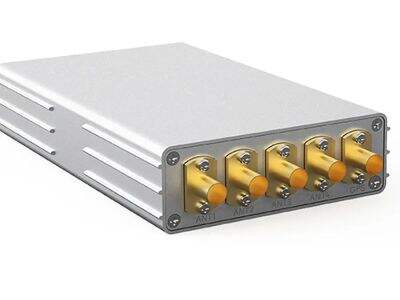Voordelen
Groen Infrastructuur Flapsemc Pagina 1 van 25 Groene Infrastructuur voor Duurzame Stedelijke Ontwikkeling Afhandelcode: Toelichten van het concept groene infrastructuur, Groene Infrastructuur 12 GIF is de term die wordt gebruikt om groene activa of elementen binnen een netwerk of kader te definiëren en te verbinden om onderling gerelateerde diensten of services te leveren.
Groene infrastructuur is één van de cruciale manieren om slimme steden te ontwikkelen. Dit houdt in het gebruik van natuurlijke materialen, zoals planten en grond, om bij te dragen aan het reguleren van regenwater en vervuiling. Door in steden groen aan te planten, kunnen we helpen de lucht te reinigen, de temperatuur te verlagen en leefgebieden voor dieren te creëren.
Duurzame energie integreren in de planning van slimme steden.
Het gebruik van hernieuwbare energie is ook een sterke aanpak voor slimme steden om duurzaamheid te bevorderen. Dit betekent energie opwekken uit zon en wind om minder afhankelijk te zijn van fossiele brandstoffen. Hernieuwbare energie is schoon, ruim beschikbaar en milieuvriendelijk.
Smawave Technology richt zich op de ontwikkeling van slimme steden en is toegewijd aan het introduceren van nieuwe producten op het gebied van wind- en zonne-energie en andere nieuwe energiebronnen. Er zijn veel manieren waarop we minder afhankelijk kunnen worden van fossiele brandstoffen, bijvoorbeeld door zonnepanelen op onze gebouwen aan te brengen, windturbines te gebruiken en technologieën toe te passen die energie efficiënter gebruiken. Dit zal onze koolstofuitstoot verminderen en het klimaatverandering vertragen. Hernieuwbare elektriciteit creëert ook nieuwe werkgelegenheid en economische ontwikkeling in gemeenschappen.
Openbaar vervoer en duurzame mobiliteitsoplossingen Bewustwording
De derde categorie van duurzame ontwikkeling van slimme steden is de ondersteuning van openbaar vervoer en groene mobiliteitsoplossingen. Dit maakt efficiënte en toegankelijke transportopties mogelijk die het verkeer, koolstofuitstoot en andere vormen van vervuiling verminderen. Door mensen te stimuleren openbaar vervoer, wandelen en fietsen beter te benutten, kunnen we positief invloed uitoefenen op de luchtkwaliteit en onze koolstofuitstoot minimaliseren.
Smawave Technology ondersteunt duurzame mobiliteitsalternatieven bij de ontwikkeling van slimme steden. Door de infrastructuur voor bussen, metro's, fietsen en voetgangers te verbeteren, kunnen we gemeenschappen bouwen die veiliger en beter verbonden zijn. Openbaar vervoer kan ook leiden tot minder afhankelijkheid van auto's, minder ongelukken en een gezondere bevolking.
Optimalisatie van hulpbronnen via digitale technologieën
Een vierde aanpak van duurzame slimme steden is het gebruik van digitale technologieën voor het optimaliseren van hulpbronnen. Dit houdt in het integreren van sensoren, datananalyse en slimme apparaten om energieverbruik, watergebruik, productieafval en dergelijke te volgen en te beheren. Met data kunnen we op een overwogen manier beslissingen nemen voor betere inzet van hulpbronnen en afvalreductie.
Smawave Technology is van mening dat digitale technologieën bijdragen aan een efficiënter gebruik van hulpbronnen voor de ontwikkeling van slimme steden. De combinatie van slimme meters, sensoren en energiesystemen maakt real-time monitoring, analyse en controle van hulpbronnen mogelijk. Deze informatie kan ons helpen inzicht te krijgen waar efficiëntieverbeteringen mogelijk zijn, slimme oplossingen te vinden en in de toekomst een deel van de bespaarde kosten terug te investeren in diensten.
Het bevorderen van gemeenschapsdeelname in de uitrol van slimme steden voor een duurzame toekomst
Betrokkenheid van de gemeenschap is de vijfde en laatste duurzame strategie voor slimme, duurzame ontwikkeling van slimme steden. Dit houdt in dat inwoners, bedrijven en organisaties worden betrokken bij de ontwikkeling, het ontwerp en de implementatie van initiatieven voor slimme steden. Door samenwerking en betrokkenheid mogelijk te maken, kunnen we onze gemeenschappen veerkrachtiger en inclusiever maken.
Smawave 5G RedCap Technologie begrijpt dat lange-termijn levensvatbaarheid enkel mogelijk is door de gemeenschap te betrekken bij projecten voor slimme steden. Door te luisteren naar wat belangrijk is voor de gemeenschap, kunnen we projecten ontwikkelen die voor iedereen werken. Het communiceren met inwoners helpt ook om vertrouwen, sociaal kapitaal en een gevoel van eigenaarschap bij projecten voor slimme steden te creëren.

